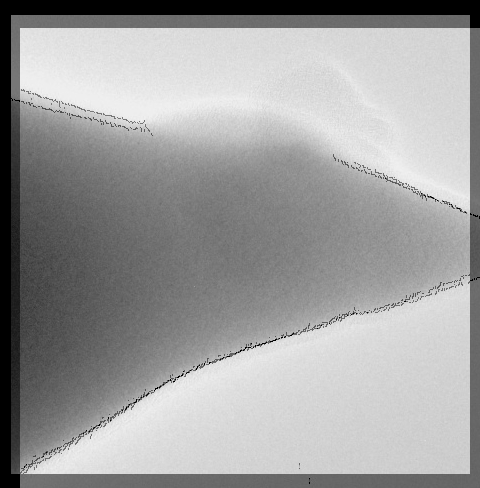Registration of TEM images
From MMVLWiki
(Difference between revisions)
(Copied Manuel Boissenin's PMWiki page about TEM image registration) |
m |
||
| (4 intermediate revisions by one user not shown) | |||
| Line 1: | Line 1: | ||
[[Image:ResImage15 16.png|thumb|300px|right|2D alignment of two TEM images]] | [[Image:ResImage15 16.png|thumb|300px|right|2D alignment of two TEM images]] | ||
| − | |||
| − | + | When doing cross-correlation one typically uses a window function to avoid boundary effects. Instead of using a window function, one can use edge detection followed by cross-correlation for 2D alignment of images. The cross-correlation was performed using Fast Fourier Transform. | |
| − | + | =See Also= | |
| + | * [[Image:Mimasanim.gif|40px]] [[Mimas]] | ||
| − | + | [[Category:Nanorobotics]] | |
| − | + | ||
| − | [[ | + | |
Latest revision as of 12:53, 13 March 2009
When doing cross-correlation one typically uses a window function to avoid boundary effects. Instead of using a window function, one can use edge detection followed by cross-correlation for 2D alignment of images. The cross-correlation was performed using Fast Fourier Transform.
